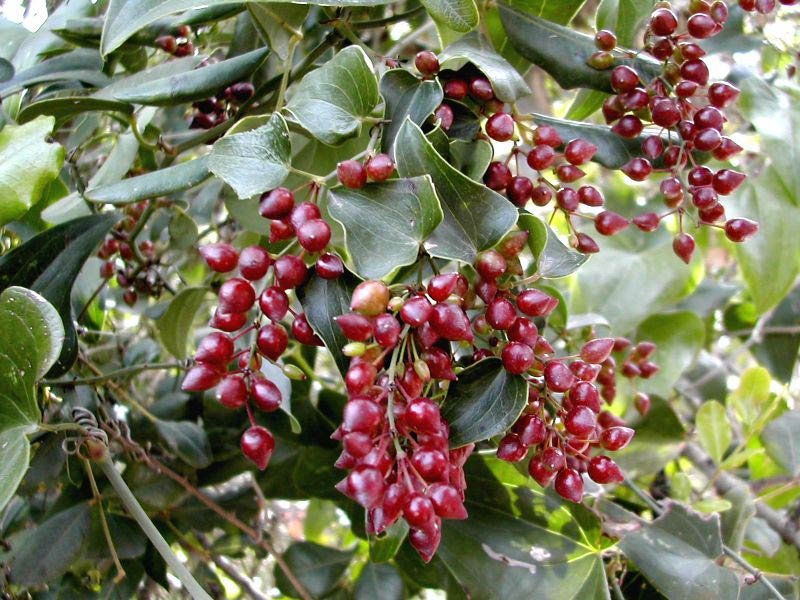
Botanical Name: Smilax regelii
Kingdom: Plantae
Division: Magnoliophyta
Class: Magnoliopsida
Order: Liliales
Family: Smilacaceae
Genus: Smilax
Species: S. regelii
Popular Names: Indian Sarasaparilla, Anantamool
Part Used: Root
Habitat: Found in Central India
Description
Sarsaparilla is a woody wine that can grow up to a height of 50 m. It has small flowers and black, blue or red fruits, in berry-like form, which are eaten by the birds. It is a member of the lily family and is native to the tropical and temperate parts of the world, such as South America, Jamaica, the Caribbean, Mexico, Honduras and the West Indies. Its long, tuberous rootstock produces a vine, which trails on the ground and climbs by means of tendrils growing in pairs from the petioles of the alternate, orbicular to ovate, evergreen leaves. The small, greenish flowers grow in auxiliary umbels.
Plant Chemicals
Sarsaparilla’s main plant chemicals include acetyl-parigenin, astilbin, beta-sitosterol, caffeoyl-shikimic acids, dihydroquercetin, diosgenin, engeletin, essential oils, epsilon-sitosterol, eucryphin, eurryphin, ferulic acid, glucopyranosides, isoastilbin, isoengetitin, kaempferol, parigenin, parillin, pollinastanol, resveratrol, rhamnose, saponin, sarasaponin, sarsaparilloside, sarsaponin, sarsasapogenin, shikimic acid, sitosterol-d-glucoside, smilagenin, smilasaponin, smilax saponins A-C, smiglaside A-E, smitilbin, stigmasterol, taxifolin, and titogenin. Majority of sarsaparilla’s pharmacological properties can be attributed to the plant steroids sarsasapogenin, smilagenin, sitosterol, stigmasterol, and pollinastanol; and the saponins sarsasaponin, smilasaponin, sarsaparilloside, and sitosterol glucoside.
Uses and Benefits of Sarsaparilla
- Sarsaparilla is also used to treat venereal diseases, herpes, arthritis, gout, epilepsy, insanity, chronic nervous diseases, abdominal distention, intestinal gas, debility, impotence and turbid urine.
- Its root has been used by the indigenous populations of Central and South America for centuries, for conditions such as sexual impotence, rheumatism, skin ailments, and as a general tonic for physical weakness.
- The tribal people in Peru and Honduras have long used the plant for curing headaches, joint pain and common cold.
- Many traditional medicine practitioners use the plant root, both internally and externally, for treating leprosy and skin problems such as psoriasis and dermatitis.
- European physicians use sarsaparilla root as a tonic, blood purifier, diuretic, and sweat promoter.
- Sarsaparilla has been used worldwide for treating gout, syphilis, gonorrhea, wounds, fever, cough, scrofula, hypertension, digestive disorders, and cancer.
- Today, the herb is available extensively in the form of tablets, capsules and tincture products. Most of the plant root being used to produce herbal medicines comes from cultivation projects in Mexico and Latin America as well as China.
- It is combined with other herbs in the naturopathic and herbal medicine practices, for its tonic, detoxifying, blood-purifying and lymph-cleansing properties.
- The plant root is one of the ingredients in a range of herbal remedies prepared for skin disorders, libido enhancement, hormone balancing, and sports nutrition formulas.
Caution
There is no known toxicity or side-effects that have been documented for sarsaparilla. However, ingestion of large doses of saponins may cause gastro-intestinal irritation.

